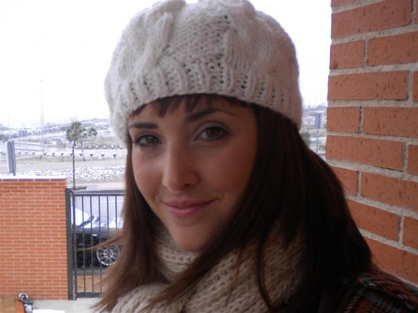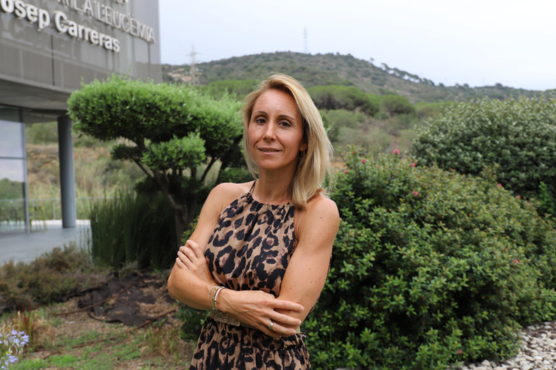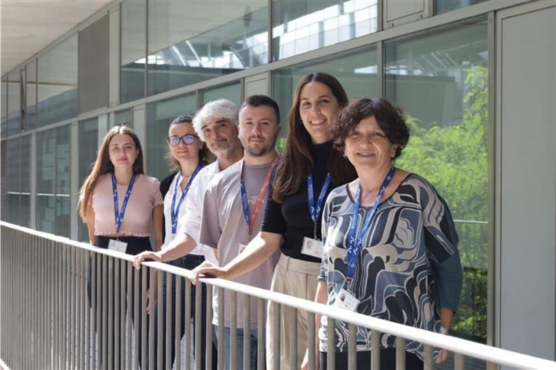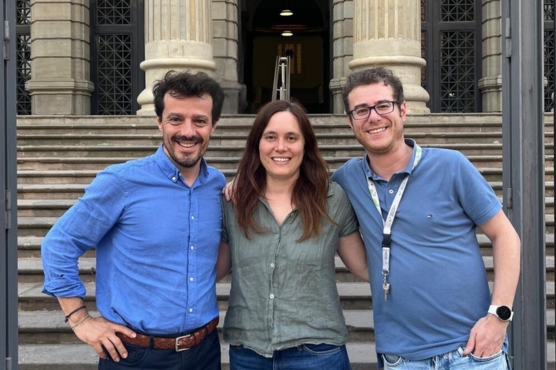
Janire is 32 years old and is from Bilbao. For 4 years she has been suffering with a blood disease called bone marrow aplasia which consists of the disappearance of the bone marrow stem cells charged with the production of all the blood cells. As a result, patients like Janire who suffer from this disorder, encounter a deficit of varying degrees of intensity, of erythrocytes (or red blood cells, charged with transporting oxygen to the tissues), of leukocytes (or white blood cells, charged with the defence against infections) and of the platelets (charged with preventing haemorrhages).
The elected treatment for severe bone marrow aplasias in young patients is a bone marrow transplant. This is the case with Janire. As she doesn’t have any siblings, the Bone Marrow Donors Registry (REDMO), started a global search to find a compatible donor for Janire. Her situation is not uncommon: only 1 in every 4 patients who need a bone marrow or umbilical cord blood transplant has a compatible family member. The other 75% count on REDMO, which is managed by our Foundation, to find their “identical twin” somewhere in the world.
We wanted to talk to Janire about how she is dealing with this waiting period.
– What was the moment like when you were diagnosed?
Janire:They took a month and a half to tell me the diagnosis. Leukaemia had been ruled out after a bone marrow puncture and I was told that I could be suffering from a myelodysplastic syndrome or a bone marrow aplasia*. When they confirmed that it was bone marrow aplasia, I felt hopeful because there is a treatment and it works in 80% of cases. No one told me that I was a part of the other 20% and that after two rounds of treatment I still wouldn’t have seen any results.
– What exactly does the treatment consist of?
Janire: Each treatment is in a block of 6 months and it starts with a week in isolation in the hospital. The treatment takes place over 5 days: for 8 hours a day they treat you with thymoglobulins. In my case there were no great complications; my defences were low but it wasn’t necessary to put me in isolation. I did suffer from allergies, headaches, and fevers etc. Following the week in the hospital, the treatment continues at home with a high dosage of an immunosuppressant pill (cyclosporine). During the 5 month period, a hospital visit is required every week. Tests are run to analyze any variations and check the levels of cyclosporine in the blood and to assess whether blood or platelet transfusions are necessary.
After six months there is a review as to whether to treatment has worked or not. If it hasn’t worked and a donor still hasn’t been found then the treatment is repeated.

– After a certain time under treatment, your body begins to react negatively. When and how were you told that the only hope for a cure would be a bone marrow or umbilical cord blood transplant? Did you think that a donor would be found quickly?
Janire: They repeated the treatment three times. During the second round of treatment my body started to respond and for two years I have managed to keep levels normal, without the need for transfusions, and I have been able to lead a normal life. When I began the second treatment my haematologist registered me on the REDMO, but as the treatment worked and I have been well for two years, the search was suspended.
Now, after a relapse in April 2011, the search for a donor for me has been reactivated. As the six months of the third treatment have now passed and my levels continue the same, it is obvious that the only option is a transplant. In addition, it is the best way to find a definitive cure and finally forget about all of this and the possibility of relapses.
I never lose hope that a donor will be found. I don’t need a transplant imminently, I can wait, but as more time passes the uncertainty and concern as to whether “I will have a rare bone marrow” grows.

– What would it mean to you if one day your doctor calls you to say: “we have a donor for you”?
Janire: I suppose that that day would bring a host of different emotions: happiness, hope, fear, respect… The hope that all this might be over and fear of the transplant and any possible complications.
– What would you say to someone that is thinking about registering as a donor?
Janire: I would tell them to do it without a doubt because it is beneficial for everyone. Today it is me who needs it but tomorrow it could be anyone. No one is free from risk. In addition, it would be an incredible experience and must feel amazing to save a life in such a simple way, with no risk to the donor.

– What do you ask for the future? What are you plans at the moment? Have your values and dreams changed since you were diagnosed?
Janire: I hope the future brings good things. I don’t expect too much. To be able to lead a normal life, to go back to work, to play sports, to climb hills without feeling tired… I want realize all the plans I made before the relapse, which are postponed, not cancelled.
After four years of fighting with this, I don’t think I would recognize the Janire from before. I have changed and I have improved. The disease has helped me to enjoy the smaller things in life more. I don’t get stressed about the things that used to frustrate me and really weren’t that important. I have learnt the value of being healthy and taking care of your health. I have learnt to fight and I have discovered that I am strong; much stronger than I thought. I have found out who my true friends are and who are not, and I am much more sensitive to the pain of others.
*All the diseases that Janire mentions are haematological malignancies (or cancerous diseases of the blood). Find more information here.







